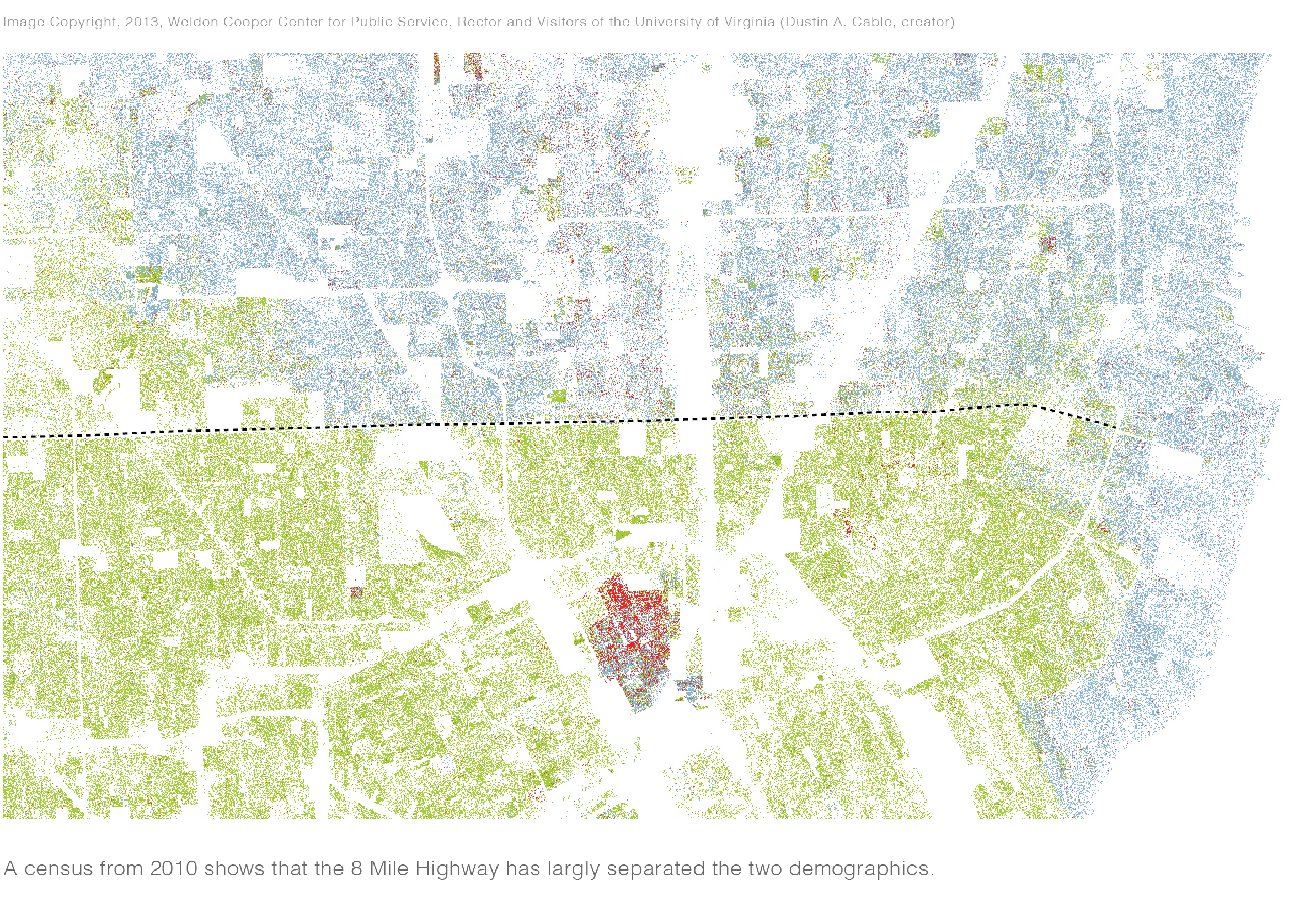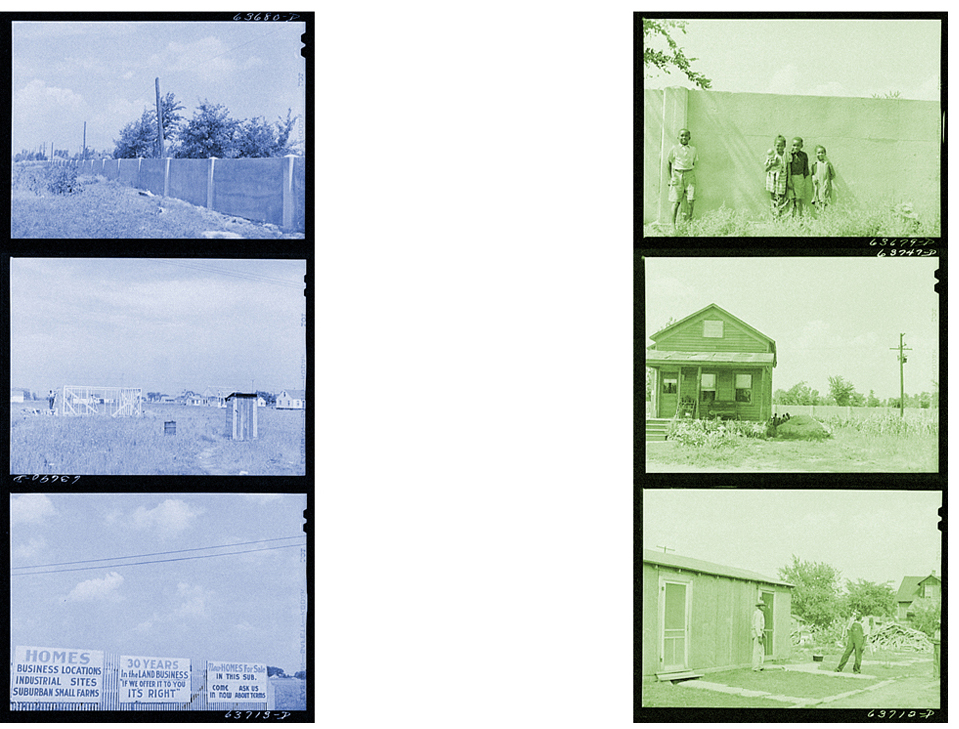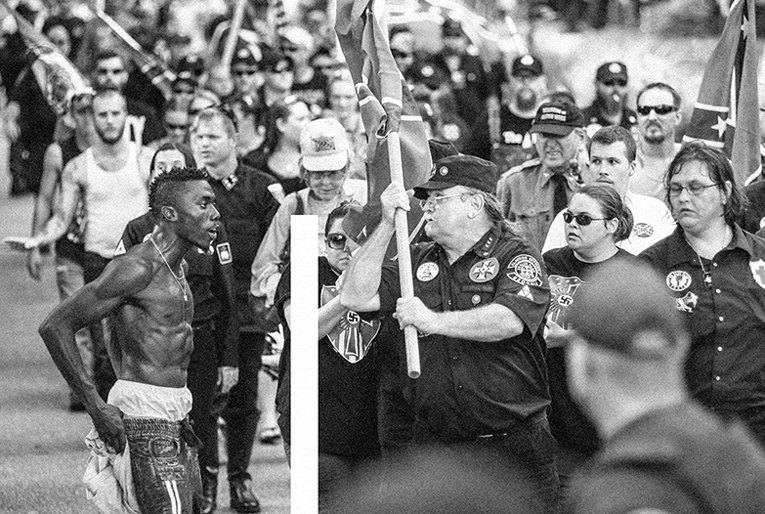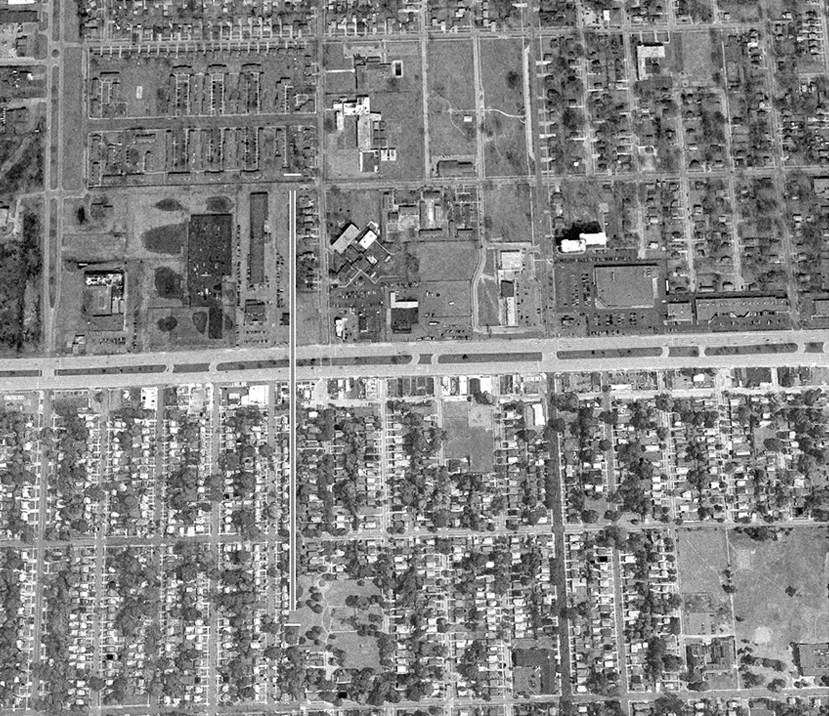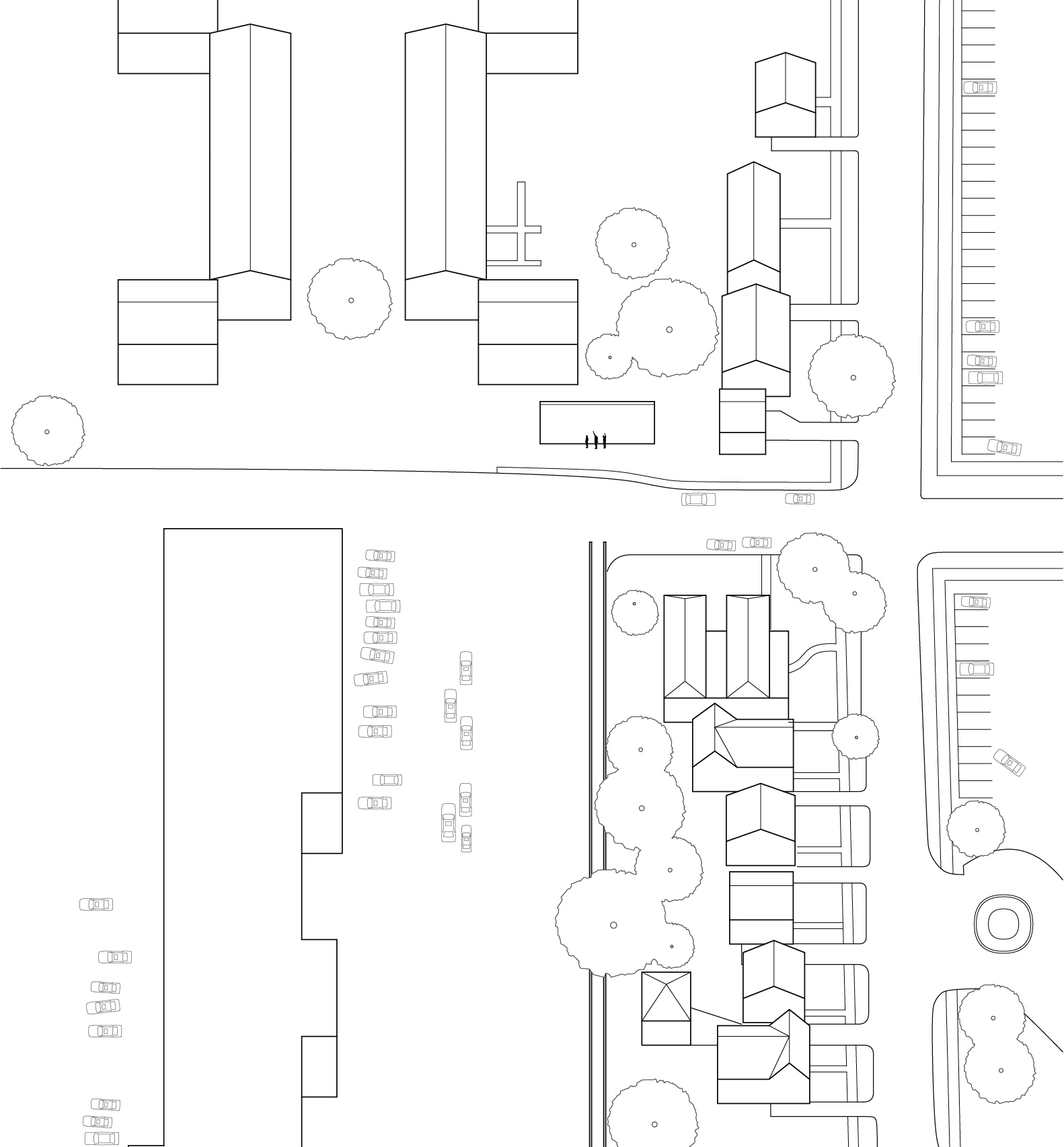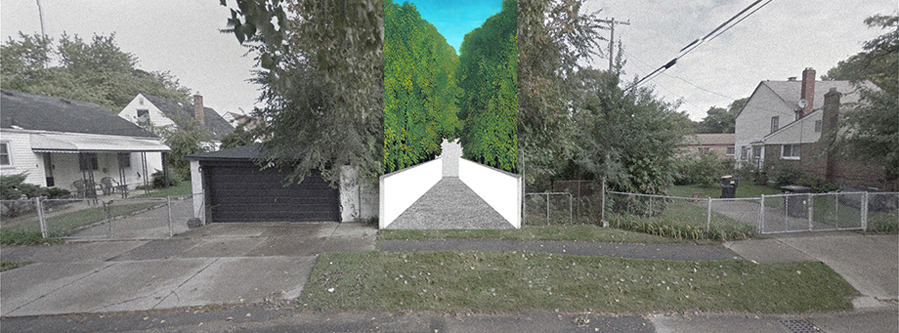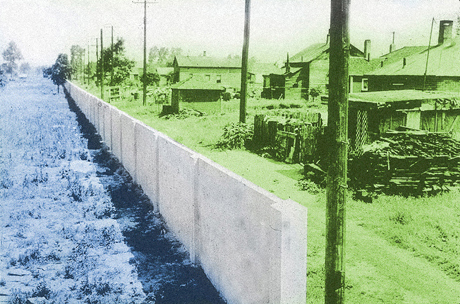
Mic Check 1, 2, 3 deploys basic architectural elements in order to recognize procession and declaration in Detroit, Michigan. One wall—the Birwood wall of 1941 built to segregate a white development from a black neighborhood—turns into two, so that a former divider becomes a means to cut open the city fabric. Where access was once forbidden, passage is now encouraged. These walls run perpendicular to 8 Mile, Detroit’s current racial divide. At their terminus, the two walls meet a third. Oriented perpendicular to Birwood and set back, the third wall demarcates a space, serving to frame, support, and validate citizen expression. In other words, a dividing wall is transformed into a pathway that leads to a different kind of wall, one that acts as stage or back drop—in effect architecture as canvas, bearing the evolution of a community. The result is not only a formal connection between segregated neighborhoods, but also a conduit for parading, marching, and protest, encouraging both mobilization and infiltration by those historically kept apart.
